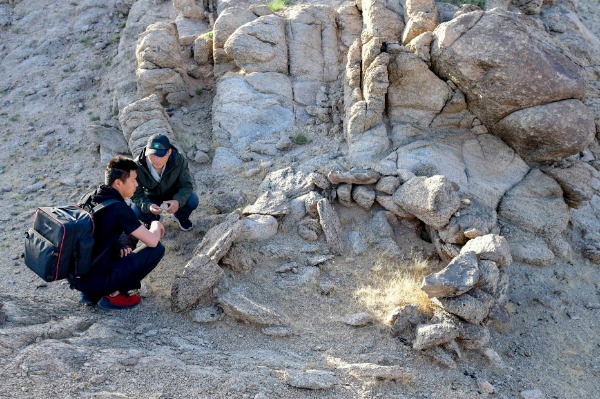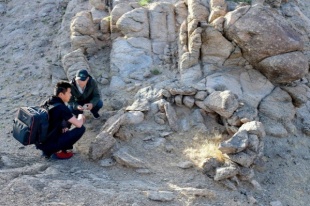Camels, horses, drones help protect heritage sites


HOHHOT-Herder Siqinbat in Alshaa Left Banner, North China's Inner Mongolia autonomous region, spends half of his time, weather permitting, on a camel's back patrolling relic sites scattered in desert areas.
After a sandstorm ebbed on Tuesday, the part-time relic conservator checked a beacon tower built about 800 years ago, dating back to the Western Xia Dynasty (1038-1227).
"The wind and sand slashed so hard. I did not sleep well. I went out to the beacon tower at dawn," he says.
It took Siqinbat an hour and a half on a camel's back from his home to the relic site.
The county-level Alshaa Left Banner has 40 percent of its land covered by desert, where vehicles often get stuck in sand.
The county has more than 200 cultural heritage sites, including sections of the Han Dynasty (206 BC-AD 220) Great Wall and ancient tombs. Most of them are located in scarcely populated areas, where the harsh environment makes cultural preservation difficult.
The county government has set up a camel or hump patrol team, recruiting camel-raising herders like Siqinbat to help protect the relics. Over the past five years, their patrols have helped prevent numerous activities harmful to relic protection, such as illegal mining near the ancient Great Wall sections and the cultural ruins.
So far, 41 herders have joined the patrol team. Each of them oversees an area of 3,000 square kilometers.
Under Siqinbat's spectrum of duty, there are seven relic sites. Every time he visits these heritage sites, he takes photos and reports via WeChat to the team's supervisors with the local cultural department.
Siqinbat's family contracts about 800 hectares of grassland and keeps a stock of 100-plus camels. The family income mainly depends on the government's grazing ban subsidies and selling camel milk, which earns about 200,000 yuan ($30,460) a year.
The 39-year-old herder says he joined the cultural protection team out of his own interest. At first, he thought the relic sites were mysterious, and through the work, he has learned a lot of historical stories about their heritage and found them fascinating.
"Now I want to protect these cultural relics so that future generations can see them," he says.
There are 21,099 immovable cultural heritage sites scattered over 1.18 million square km of land in Inner Mongolia. The relic sites also include 7,570-km-long sections of the Great Wall, which makes up 35 percent of the total length of the Great Wall in the country.
To better protect such cultural heritage, the local governments have introduced hump and horseback patrol teams as well as unmanned aerial vehicle patrols in the vast land.
There are 13 horseback cultural protection teams composed of 179 cavalries patrolling heritage sites on the Xiliin Gol Grassland.
According to the Xiliin Gol cultural relics department, since 2011, the patrol teams have helped the local police uncover dozens of illegal acts such as destroying cultural relics and robbing ancient tombs, retrieving more than 300 stolen relics and arresting more than 10 suspects.
Tumen, a patrol team member in Zhengxiangbai Banner, Xiliin Gol League, reported suspicious holes dug in his meadow to the police in 2013. Following the clues of tomb raiders' activities, a tomb dating back to the Northern Wei Dynasty (386-534) was discovered and then listed on the New Archaeological Discoveries in China in 2014.
Drones have been adopted since 2019 in all 103 banners, counties and districts of Inner Mongolia to carry out inspections on cultural relics in the fields.
"With the reinforced patrols, we have strengthened the cultural relics protection and accumulated experience for the conservation in sparsely populated areas," says Chen Yongzhi, director of Inner Mongolia Administration of Cultural Heritage.





































